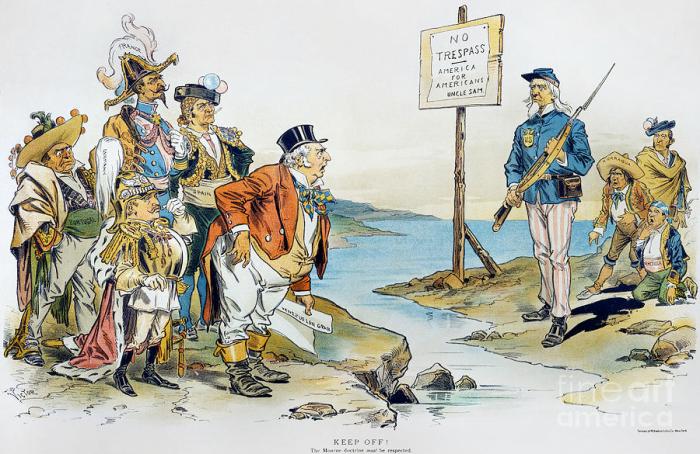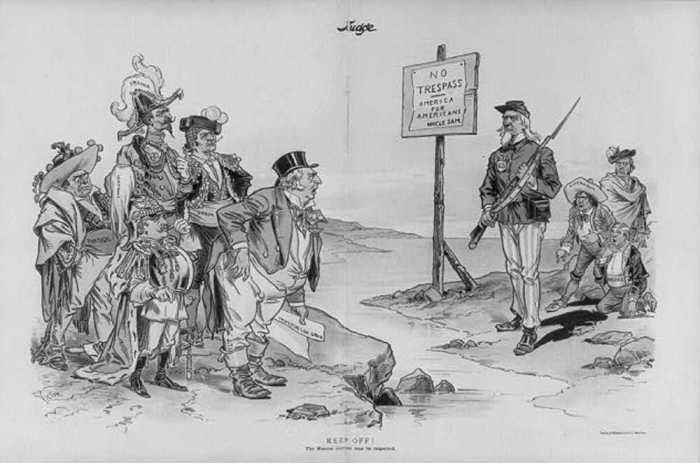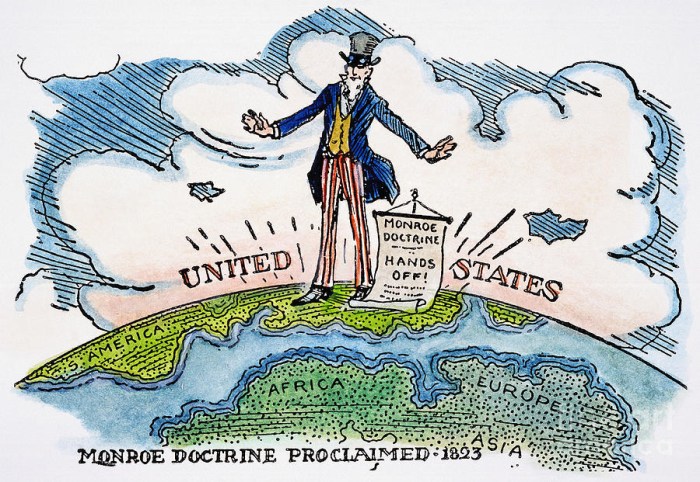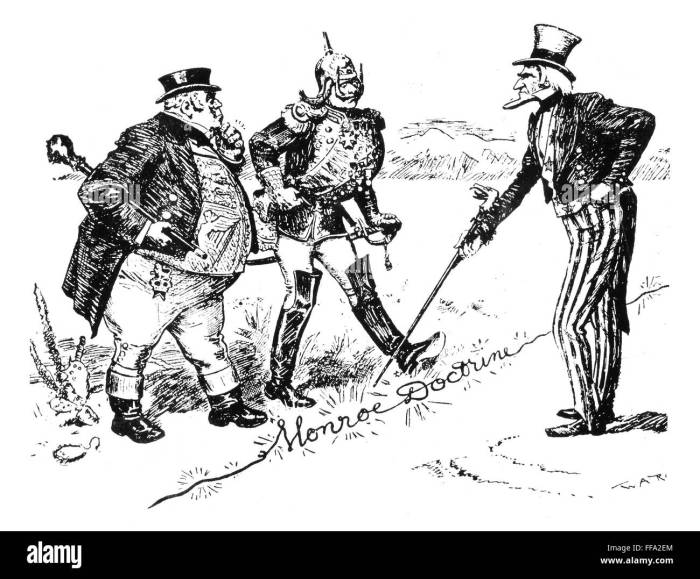The “Uncle Sam Monroe Doctrine Cartoon Meaning” delves into the intriguing interplay between the Monroe Doctrine, American foreign policy, and the perceptions of Latin American nations. This iconic cartoon serves as a powerful lens through which we can explore the complexities of American imperialism and its lasting impact on inter-American relations.
The cartoon’s imagery, symbolism, and metaphors offer a nuanced commentary on the expansionist ambitions of the United States, while also shedding light on the reactions and perspectives of Latin American nations.
Uncle Sam Monroe Doctrine Cartoon Meaning

Historical Context of the Monroe Doctrine
The Monroe Doctrine, proclaimed by President James Monroe in 1823, declared that the Western Hemisphere was off-limits to European colonization or interference. It was a cornerstone of American foreign policy for over a century and had a profound impact on the development of the Americas.
Description of the Cartoon’s Imagery
The cartoon depicts Uncle Sam, the personification of the United States, as a giant figure looming over the Western Hemisphere. He is holding a baseball bat labeled “Monroe Doctrine” and a sign that reads “No Trespassing.” Behind him are smaller figures representing Latin American nations, looking up at him with apprehension.
Symbolism and Metaphors
The cartoon uses symbolism and metaphors to convey its message. Uncle Sam’s large size and imposing stance represent the United States’ dominance in the Western Hemisphere. The baseball bat symbolizes the Monroe Doctrine as a tool of American power. The sign “No Trespassing” warns European nations to stay away from the Americas.
Manifest Destiny and American Imperialism
The Monroe Doctrine was closely linked to the concept of Manifest Destiny, the belief that the United States was destined to expand across the North American continent and beyond. The cartoon reflects this expansionist ambition by depicting Uncle Sam as a powerful figure overshadowing the smaller Latin American nations.
Critique of American Imperialism
The cartoon also critiques American imperialism. The sign “No Trespassing” suggests that the Monroe Doctrine was used to justify American intervention in Latin America. The apprehensive expressions on the faces of the Latin American figures hint at the resentment and fear that many Latin Americans felt towards American dominance.
Latin American Perspectives, Uncle sam monroe doctrine cartoon meaning
The Monroe Doctrine had a mixed reception in Latin America. Some nations welcomed it as a protection against European colonialism. Others saw it as a tool of American imperialism that would limit their sovereignty.
Relationship between the United States and Latin America
The cartoon portrays the relationship between the United States and Latin America as one of inequality. Uncle Sam’s towering figure dominates the scene, while the Latin American nations are depicted as small and vulnerable.
Historical Impact and Legacy
The Monroe Doctrine had a long-term impact on inter-American relations. It shaped American foreign policy for over a century and was used to justify numerous interventions in Latin America.
Perceptions of American Foreign Policy
The cartoon’s imagery continues to shape perceptions of American foreign policy. It serves as a reminder of the United States’ dominance in the Western Hemisphere and the potential for American imperialism.
Essential Questionnaire
What is the Monroe Doctrine?
The Monroe Doctrine, proclaimed by President James Monroe in 1823, asserted that the Americas were closed to further European colonization and that any intervention by European powers in the Western Hemisphere would be considered an act of aggression against the United States.
How does the cartoon critique American imperialism?
The cartoon depicts Uncle Sam as a towering figure overshadowing Latin America, symbolizing the United States’ dominance and expansionist ambitions. The presence of Uncle Sam’s boot on the map of Latin America suggests the oppressive nature of American imperialism.
What were the reactions of Latin American nations to the Monroe Doctrine?
Latin American nations had mixed reactions to the Monroe Doctrine. Some welcomed it as a protection against European intervention, while others saw it as a tool for American domination and expansionism.




